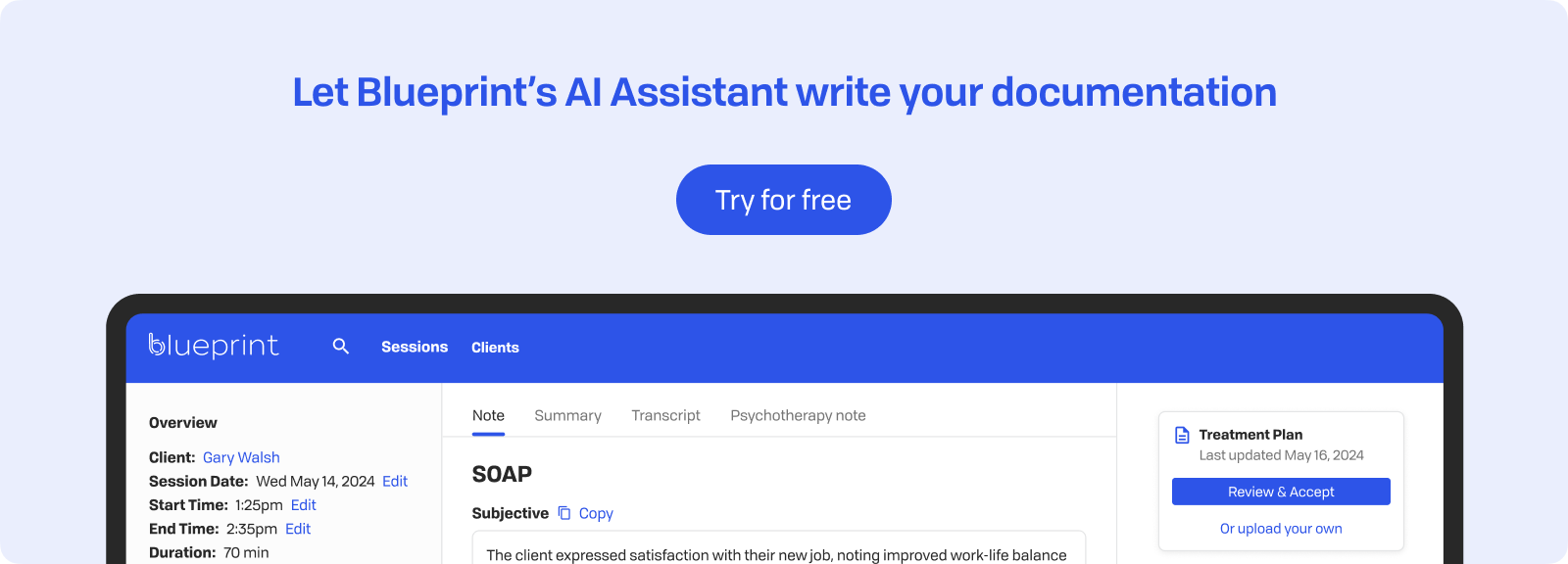In Brief
Couples therapy offers partners a structured space to work through challenges, deepen their understanding of one another, and build healthier patterns of interaction. Whether addressing ongoing conflict, rebuilding trust, or simply wanting to improve communication, guided exercises can make sessions more impactful and provide tools couples can continue using at home.
In clinical practice, these interventions often take place in sessions billed under CPT code 90847 (family psychotherapy with patient present), reflecting the collaborative and relational focus of the work. While the billing code may matter for documentation, the heart of couples therapy lies in creating opportunities for partners to connect, practice new skills, and strengthen their bond in ways that feel safe and meaningful.
This article introduces practical, evidence-informed exercises designed to enhance connection and communication, offering clinicians strategies they can adapt to fit each couple’s unique needs.
The Role of Structured Exercises in Couples Therapy
While open dialogue is central to couples therapy, structured exercises provide an essential framework for growth and change. These activities give partners a clear way to practice new skills, explore difficult emotions, and interrupt long‑standing patterns that often fuel conflict. For many couples, the exercises offer both a sense of direction and a safe container, balancing spontaneous conversation with intentional practice.
Why exercises matter in therapeutic outcomes
Experiential learning enhances retention and application of new skills far more effectively than passive listening. In couples therapy, exercises allow partners to immediately practice healthier interaction patterns while you observe and guide them. This real-time coaching helps you catch subtle dynamics, redirect harmful patterns, and reinforce positive changes as they happen.
The structured nature of these activities also helps reduce anxiety and defensiveness that often arise in open-ended discussions. When couples understand what's expected and have clear guidelines, they engage more authentically instead of falling into familiar attack-defend cycles. This predictability fosters a safer environment for vulnerability and risk-taking.

Bridging theory with practice in the session and at home
One challenge in couples therapy is helping partners apply insights from therapy to their daily lives. Exercises act as practical bridges between understanding and real-world application. When you introduce a communication exercise in session, you provide a framework that partners can use during conflicts at home.
The most effective exercises are those that couples can adapt and repeat outside of therapy. For example, teaching partners a structured listening exercise in session gives them a tool to use when tensions arise at home. This continuity between therapy and daily life speeds up progress and helps couples feel more empowered in their relationship.
Encouraging active participation and emotional safety
Structured exercises naturally encourage both partners to participate equally, preventing one person from dominating the conversation or withdrawing entirely. This balanced engagement is vital for couples where power dynamics or communication imbalances exist. When both partners know they'll have designated time to speak and be heard, defensive walls often lower.
Creating emotional safety through structure also allows partners to explore vulnerable topics they might otherwise avoid. The predictable format of exercises provides containment for difficult emotions, making it easier for couples to address painful issues. This safety net encourages deeper exploration and more authentic sharing than unstructured conversations typically allow.
Tailoring interventions to a couple's unique needs
Having a repertoire of standard exercises is valuable, but the art lies in customizing these interventions to match each couple's specific challenges and strengths. A couple struggling with emotional disconnection needs different exercises than partners working through betrayal or communication breakdowns. Your clinical judgment guides which exercises to introduce and how to modify them.
While having a repertoire of structured exercises is valuable, the real effectiveness comes from tailoring them to each couple’s unique context. A pair struggling with emotional distance will benefit from different interventions than partners navigating issues of trust or frequent conflict. Your clinical judgment is essential in deciding not only which exercises to introduce but also how to adapt them to fit the couple’s cultural background, attachment styles, and relationship history. Flexibility is key—when exercises are responsive to a couple’s needs and readiness, they feel purposeful and engaging rather than generic or imposed, increasing the likelihood of lasting change.
Communication-Focused Exercises in Couples Therapy
Active Listening Practice: Teaching partners to reflect, validate, and summarize
Active listening changes how couples hear each other. In this exercise, one partner speaks for 2-3 minutes about a concern while the other listens quietly. The listener then reflects back what they heard, validates the emotions expressed, and summarizes the main points. The listener is advised to not interrupt, defend, or offer solutions during this time, but instead focus on truly understanding and conveying empathy for their partner’s experience. This practice helps partners feel truly heard and reduces misunderstandings that cause conflicts.
The Speaker-Listener Technique: Enhancing clarity and emotional connection
This structured approach assigns clear roles: one partner holds an object (like a pen) to indicate they're the speaker, while the other focuses entirely on listening. The speaker uses "I" statements and shares feelings without blame. After each turn, partners switch roles. This technique prevents interruptions and creates space for each person to express themselves fully while building emotional connection.
"I" Statements and Conflict Scripts: Reducing blame and defensiveness during disagreements
Teaching couples to replace "you always" or "you never" with "I feel (Fill in the Blank). when (Fill in the Blank) because (Fill in the Blank)..." can dramatically change conversation dynamics. Conflict scripts provide templates for difficult conversations:
- Opening: "I'd like to discuss something that's been bothering me"
- Feeling statement: "I feel hurt when..."
- Specific behavior: "...you check your phone during dinner"
- Impact: "...because it makes me feel unimportant"
- Request: "Could we agree to put phones away during meals?"
How to pace communication work with emotionally reactive couples
With highly reactive couples, start with brief exercises (5-10 minutes) and gradually increase duration. Introduce calming techniques between turns, such as three deep breaths or a 30-second pause. If emotions escalate, implement a structured time-out with clear return protocols. Success comes from building tolerance slowly rather than pushing through intense emotions.

Connection and Intimacy Building
Gratitude and Appreciation Journals: Reinforcing positive regard
When partners maintain separate gratitude journals about their relationship, it shifts their focus in a meaningful way. Each partner writes down three things they appreciated about the other that day, regardless of size. During sessions, couples share selections from their journals, which helps counteract the negativity that often develops in struggling relationships. This practice retrains partners to notice positive moments they might otherwise overlook.
Love Language Mapping: Understanding emotional needs
Knowing how each partner gives and receives love helps prevent efforts that might leave both feeling undervalued. Create a visual map together where partners identify their primary and secondary love languages, then brainstorm specific actions that resonate with each language. Although the concept of love languages is not evidence-backed, this exercise can reveal the different values, expectations, and strengths that each partner possesses and why one partner's acts of service might not resonate with someone who values words of affirmation. Ultimately, this exercise can help couples align their expressions of care.
Guided Imagery or Memory Sharing: Rebuilding emotional bonds
Guide couples through revisiting positive shared memories using all five senses. Have them close their eyes while you prompt them to recall their first date, a meaningful trip, or a moment of deep connection. Partners then share what they remembered, often discovering forgotten details that reignite warmth. This exercise bypasses current conflicts to access the emotional foundation of their bond.
Incorporating somatic awareness to increase closeness
Physical awareness exercises help couples reconnect through their bodies rather than just words. Simple practices like synchronized breathing, gentle hand-holding while noticing sensations, or mirroring each other's movements create nonverbal intimacy. These exercises are particularly effective for couples who tend to overthink their problems or struggle with expressing emotions.

Trust Repair and Emotional Safety Exercises
Rebuilding Trust Timeline: Mapping relationship ruptures and recovery
Creating a visual timeline helps couples see trust as an ongoing process rather than an all-or-nothing state. Partners collaborate to identify significant breaches of trust, marking them on a shared timeline along with moments of repair and reconnection. This exercise highlights patterns, demonstrates that recovery is feasible, and supports couples in recognizing the gradual nature of rebuilding. The timeline acts as a reference for tracking progress and celebrating small steps in restoring trust.
Responsibility Taking Dialogues: Encouraging ownership without shame
These structured conversations allow the partner who broke trust to fully acknowledge their actions without offering defensive explanations. The format includes:
- Acknowledgment: "I understand that when I..."
- Impact recognition: "This affected you by..."
- Ownership: "I take full responsibility without excuses"
- Commitment: "Moving forward, I will..."
The listening partner absorbs without interrupting and then shares what they need to hear for healing to begin.
Forgiveness Letters (Shared or Private): Processing betrayal or resentment
Writing helps partners process complex emotions before having verbal discussions. Some couples benefit from writing letters they'll never send, allowing them to release anger safely. Others write letters to share, expressing hurt, needs, and conditions for moving forward. This exercise provides emotional release while helping partners clarify their thoughts before potentially charged conversations.
Safety protocols for trauma-informed work in trust breakdowns
When betrayal triggers trauma responses, it is important to establish clear safety protocols:
- Grounding techniques for managing emotional overwhelm
- Time-out signals both partners agree to respect
- Check-ins about pacing and readiness
- External support options when couples work becomes too intense
These protocols ensure that efforts to repair trust do not retraumatize either partner.
Conflict Resolution and Problem-Solving Activities
Problem-Solving Worksheets: Collaborative therapy for recurring issues
Structured worksheets can turn chaotic arguments into productive problem-solving sessions. These tools guide couples through pinpointing the core issue, brainstorming solutions together, and assessing options that benefit both partners. The visual aspect of worksheets helps partners stay focused on solutions rather than getting lost in emotional reactions. Having couples complete these during calm moments equips them with concrete strategies for when conflicts arise.
Fair Fighting Rules Review: Setting expectations for healthy disagreement
Work with the couple to establish clear ground rules to foster safety within conflict. Work with couples to create their personalized list of fair fighting rules:
- No name-calling or character attacks
- One issue at a time - avoid bringing up past grievances
- Take turns speaking without interruption
- Stay in the present - focus on current behaviors, not history
- Physical space boundaries - maintain a comfortable distance
Post these rules visibly at home as reminders during heated moments.
Time-Out Planning: Teaching de-escalation and re-engagement strategies
Effective time-outs require advance planning. Help couples establish clear protocols: who can call a time-out, how long it lasts (typically 20-30 minutes), what each partner does during the break, and how they reconnect. The key is framing time-outs as relationship protection, not avoidance. Partners practice self-soothing during breaks through breathing exercises, walks, or journaling.
Adapting interventions for high-conflict or emotionally avoidant couples
High-conflict couples may need shorter, more structured exercises with frequent check-ins. Start with written exchanges before verbal discussions. For avoidant couples, use gentle prompts and normalize their discomfort. Provide an opportunity to discuss what it feels like to even think about engaging in emotionally intimate discussion. Begin with low-stakes topics before addressing deeper issues. Success comes from aligning the intervention intensity with the couple's emotional capacity.

Exercises for Long-Term Relationship Maintenance
Weekly Check-In Rituals: Encouraging intentional relationship care
The most successful couples see their relationship as something that needs regular attention. Weekly check-ins provide a consistent opportunity for partners to address small issues before they turn into major conflicts. You can structure these 30-minute meetings with specific prompts: "What went well this week?", "Where did we miss each other?", and "What do we need from each other next week?" This ritual shifts relationship maintenance from crisis management to preventive care.
Values Alignment Activities: Finding shared vision and life goals
Couples often drift apart when their individual values change without discussion. Guide partners through exercises where each person ranks life priorities like family, career, adventure, or security. They then compare rankings, discuss surprises, and identify their top five shared values. This activity reveals where partners naturally align and where they need to negotiate differences to create a unified vision.
Couples’ Goal Setting: Building collaboration and commitment
Turn individual dreams into shared projects through organized goal-setting sessions. Have partners brainstorm personal goals, then identify which ones they can pursue together. Whether it's financial planning, travel adventures, or health improvements, creating joint action plans with specific timelines and mutual accountability strengthens their bond. Review progress monthly to keep up the momentum.
Incorporating self-care practices that support both individuals and the relationship
Healthy relationships need two healthy individuals. Help couples recognize how their personal self-care practices affect their partnership. Create "self-care contracts" where partners commit to personal wellness activities while also scheduling couple-care time. This balance prevents resentment and ensures both partners bring their best selves to the relationship.
Therapist Considerations and Customization
Assessing readiness and willingness for exercises
Before introducing any structured exercise, understand where each partner stands emotionally and psychologically. Pay attention to signs of openness versus defensiveness, energy levels, and any current crisis situations that might interfere with their engagement. Some couples eagerly approach exercises while others need gentle preparation. Ask directly: "How comfortable do you feel trying something new today?" Their responses will help guide your pacing and exercise selection.
Adapting content for neurodiverse, LGBTQ+, or culturally diverse couples
Standard exercises often need adjustments to respect diverse experiences:
- Neurodiverse couples: Use clear, direct language and visual aids. Allow extra processing time and be aware of sensory sensitivities.
- LGBTQ+ couples: Ensure language and scenarios reflect their experiences. Address how minority stress impacts communication.
- Culturally diverse couples: Consider how cultural norms around emotional expression, conflict, and gender roles influence engagement.
Listen to each couple's unique context rather than making assumptions based on identity markers.
Balancing directive techniques with client-led exploration
While structured exercises provide helpful frameworks, stay adaptable. Some couples benefit from step-by-step guidance, while others need space to adjust exercises to their style. Watch for cues about when to lead versus when to follow. The most effective approach often involves introducing structure, then allowing couples to personalize it.
Managing resistance or emotional shutdown during exercises
When partners resist or shut down, pause the exercise. Explore what's happening with questions like, "I notice some hesitation. What's coming up for you?" Sometimes, resistance signals that an exercise touches on something important but overwhelming. Other times, it indicates poor timing or fit. Having backup options and remaining curious rather than pushy helps navigate these moments effectively.
Key Takeaways
Couples therapy exercises work better when built on a strong therapist-client relationship
The bond between you and the couple is crucial for the success of any exercise. Without trust and rapport with both partners, even the best-designed exercises will not succeed. The therapeutic alliance is essential for effective treatment. Partners need to feel emotionally safe with you before they'll risk vulnerability with each other. This relationship provides a secure space for couples to explore new ways of relating without fear of judgment or taking sides.
Exercises should fit the couple’s emotional, cultural, and relational background
One-size-fits-all approaches typically fail in couples therapy. Each couple brings unique histories, cultural backgrounds, and relationship dynamics that shape how they'll respond to different interventions. What feels natural for one couple might feel forced or irrelevant to another. Success requires continuous assessment and adaptation based on the couple's specific needs and capacities.
Structure helps transition from understanding to real-time relational change
Understanding problems intellectually is very different from changing ingrained patterns. Structured exercises help bridge this gap, providing practical opportunities for couples to practice new behaviors in the moment. This hands-on learning creates lasting change more effectively than discussion alone.
Other important considerations:
- Introduce exercises gradually: Start with simple exercises and increase complexity as couples build confidence
- Consent and pacing are important: Both partners should agree to participate, knowing they can pause or modify activities
- Integration across areas: Combining communication, connection, trust-repair, and maintenance exercises promotes comprehensive healing
Balance structure and flexibility: The best results come when therapists guide the process while allowing couples to adapt exercises to their needs

How Blueprint can help streamline your workflow
Blueprint is a HIPAA-compliant AI Assistant built with therapists, for the way therapists work. Trusted by over 50,000 clinicians, Blueprint automates progress notes, drafts smart treatment plans, and surfaces actionable insights before, during, and after every client session. That means saving about 5-10 hours each week — so you have more time to focus on what matters most to you.
Try your first five sessions of Blueprint for free. No credit card required, with a 60-day money-back guarantee.
























